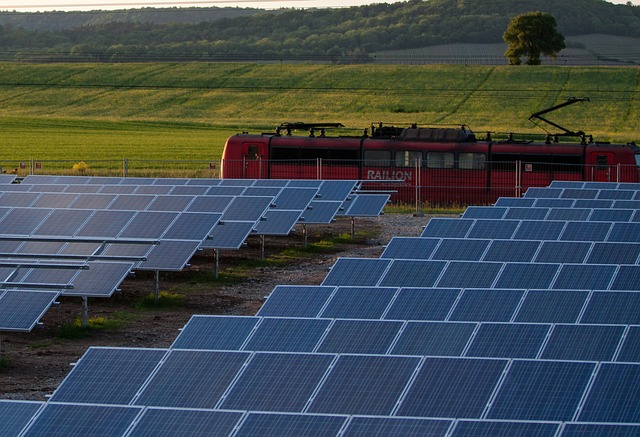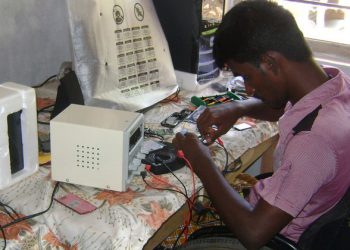
With hundreds of renewable projects sitting in the regional grid operator interconnection queue, developers should investigate the fast track process at Midcontinent Independent System Operator (MISO) and Southwest Power Pool (SPP) for project less than 5 MW in capacity. There are similarities and differences in both MISO and SPP fast track processes. Both processes need study deposits and provide an initial review with a customer options meeting. Even with a straightforward process like fast track, there are very few MISO and SPP projects in this sub-5-MW category.
Background
Large generator interconnection projects are sitting in the queue waiting to be studied. If the MISO peak load is 127,000 MW, the entire MISO interconnection queue currently has 91,000 MW in different queue stages. The same holds for SPP – SPP’s peak demand is 55,000 MW, and its interconnection queue has 85,000 MW of projects. Out of those 85 gigawatts (GWs), more than 40% are solar projects.
For utility-scale renewable projects, it makes sense for ISO interconnection engineers to run feasibility, impact, and facility studies separately. But for projects less than or equal to 5 MW, transmission providers like MISO or SPP’s role is minimum. The primary role is of the Transmission Owner (TO) or the distribution utility, as the case might be. But the renewable developer must go through the transmission provider because of capacity rights.
Going through the interconnection queue affords transmission access for smaller renewable project developers, who can then contract with the load-serving entities, to participate in energy and capacity markets.
There are 3 similarities in MISO and SPP Fast Track Process
Both MISO and SPP generator interconnection tariff section 14 discusses the fast track process containing 4 sub-sections – 1) Applicability, 2) Initial Review, 3) Customer Options Meeting, and 4) Supplemental Review. Once the renewable project meets the eligibility criteria, the initial review looks at the detailed interconnection requirements, such as, if the project connects to a radial distribution circuit, then the project should not cause an excess of 15% of the line section annual peak load at the substation.
At both ISOs, the supplemental review entails a minimum load screen, voltage plus power quality screen, and a safety and reliability screen.
Both MISO and SPP processes need deposit fees. At MISO, it is $5000, and at SPP, it is $1,000. Even with lower deposit fees at SPP, SPP staff said they don’t have any experience processing fast track projects. At MISO, there are only 2 solar projects active in the queue with a capacity of less than 5 MW. There are a couple of diesel projects under “active” study status in the MISO queue.
While the initial study deposit fees are less at both ISOs, there may be additional fees when the TO does supplemental review. That is dependent on the interconnecting TO. It appears those fees would be negotiated during the customer options meeting.
There are 3 main differences
SPP applicability criteria appear to be more centered around voltage class. Projects less than 5 kV and less than 500 kW are the first category for fast track eligibility. There are voltage class categories such as less than 15 kV, 30 kV, and 69 kV in the SPP process. SPP explicitly states that any project connecting to transmission lines greater than 69 kV would not qualify for the fast track process. But MISO process only discusses 5 MW as the threshold for fast track process applicability.
Another difference in MISO and SPP markets is that MISO has a Planning Reserve Auction (PRA) where investor-owned utilities can point to small renewable projects and address their reserve margin requirements. At the last MISO auction, 850 MW of solar cleared MISO capacity auction. Moreover, MISO has Federal Energy Regulatory Commission (FERC) approval to treat solar like a dispatchable resource (like wind and other fuels). This approval means solar units should submit their production forecasts to the MISO operator, but there is no financial penalty for deviations.
The final difference between the MISO and SPP fast track process is that the SPP process has an environmental review section. Since SPP has a federal power agency as a transmission owning member – Western Area Power Administration (WAPA) – Upper Great Plains (UGP) region (called Western-UGP in SPP tariff), an environmental review applies to projects seeking interconnection to the transmission facilities of Western UGP.
Conclusion
It is no secret that renewable projects that entered the interconnection queue in 2016 are seeing their final set of upgrade cost reports now. We can expect new renewable projects are entering the queue in 2021 to see their study results at least mid-2024. But this delay should not deter small renewable developers.
There is a fast track process for project sizes less than 5 MW with the entire process takes less than 90 days. Yes, the criteria to qualify for fast track is detailed, but if the project qualifies – renewable developers would be better served to take this step towards connecting to the wholesale markets.





